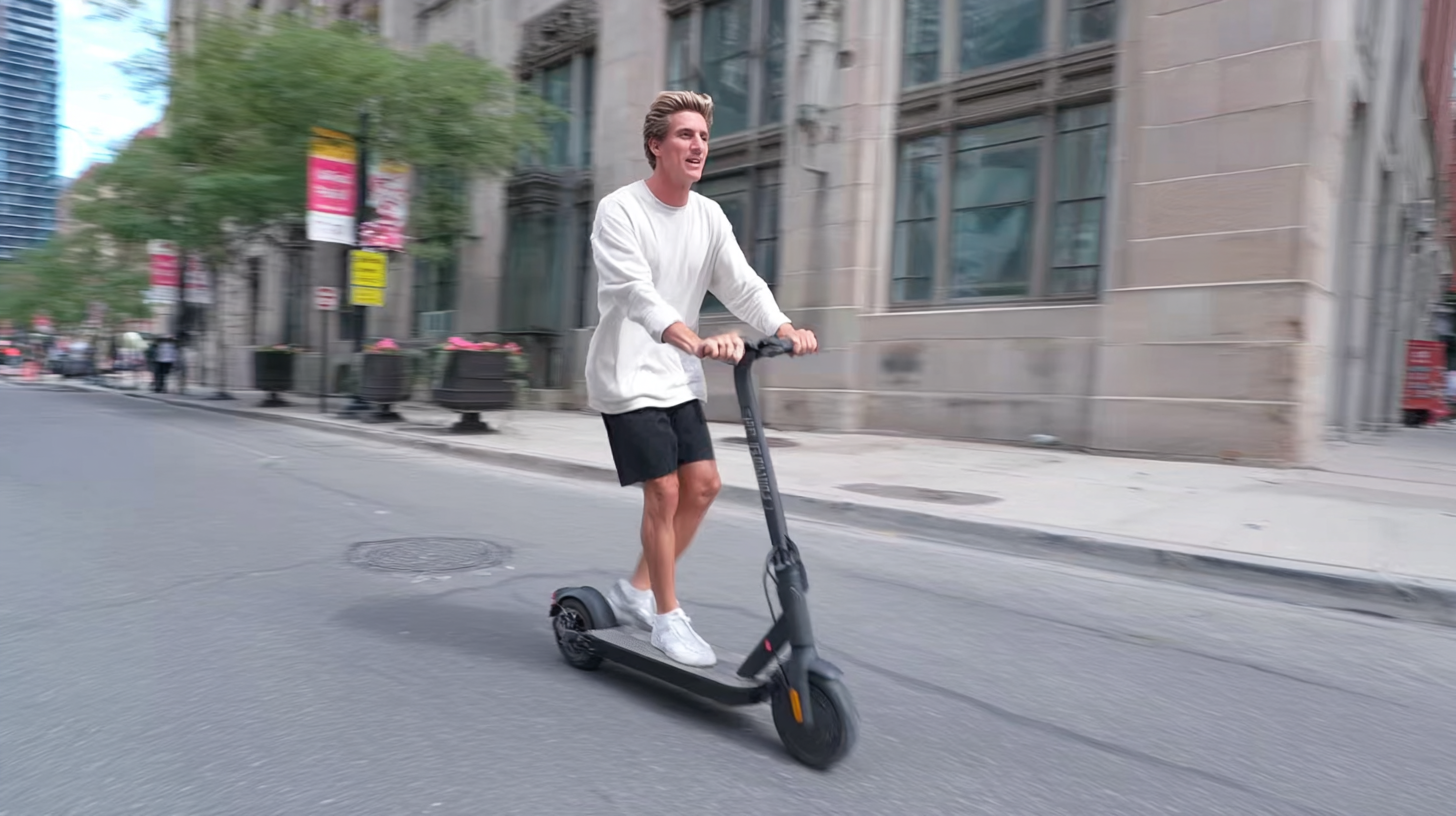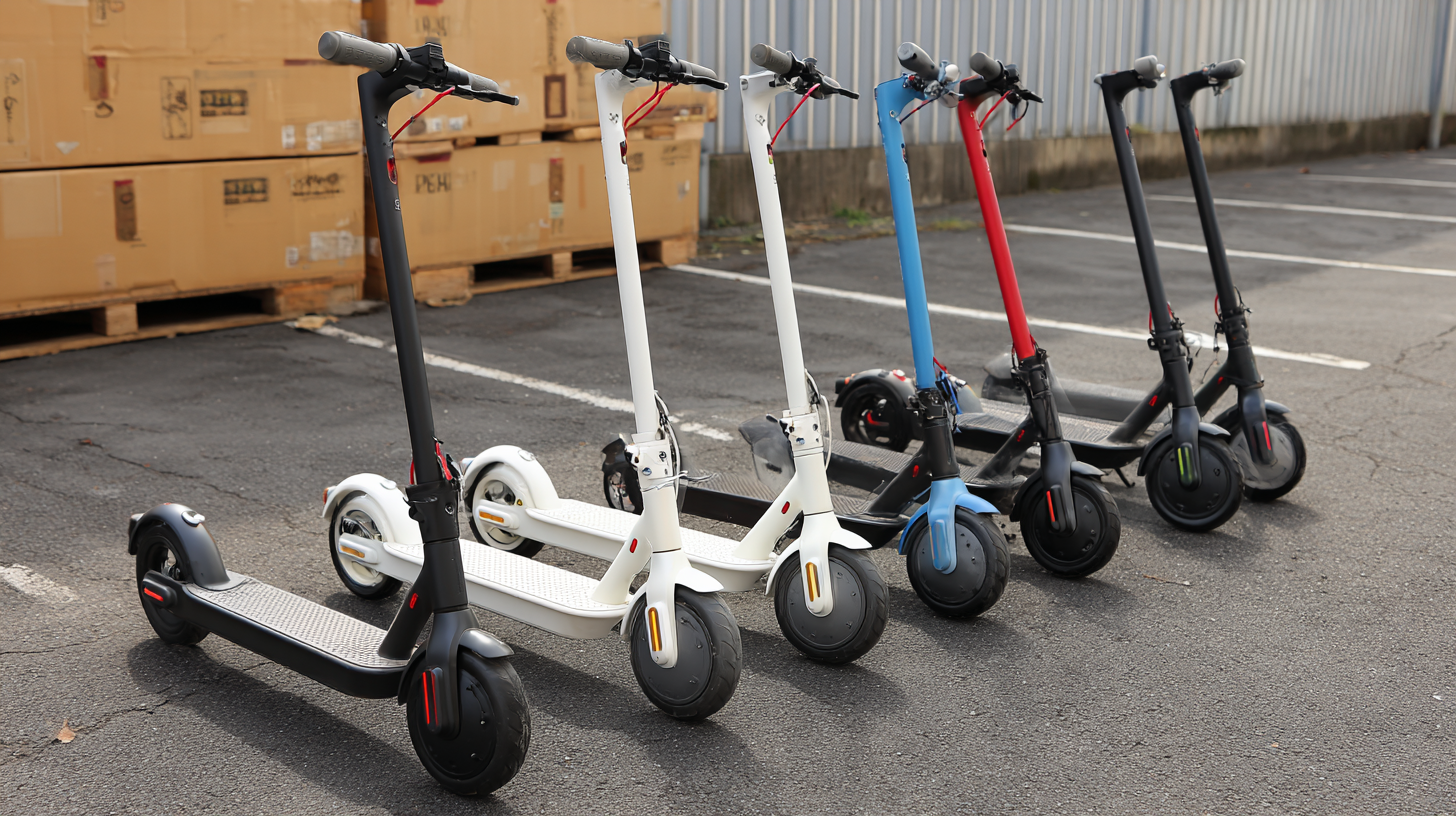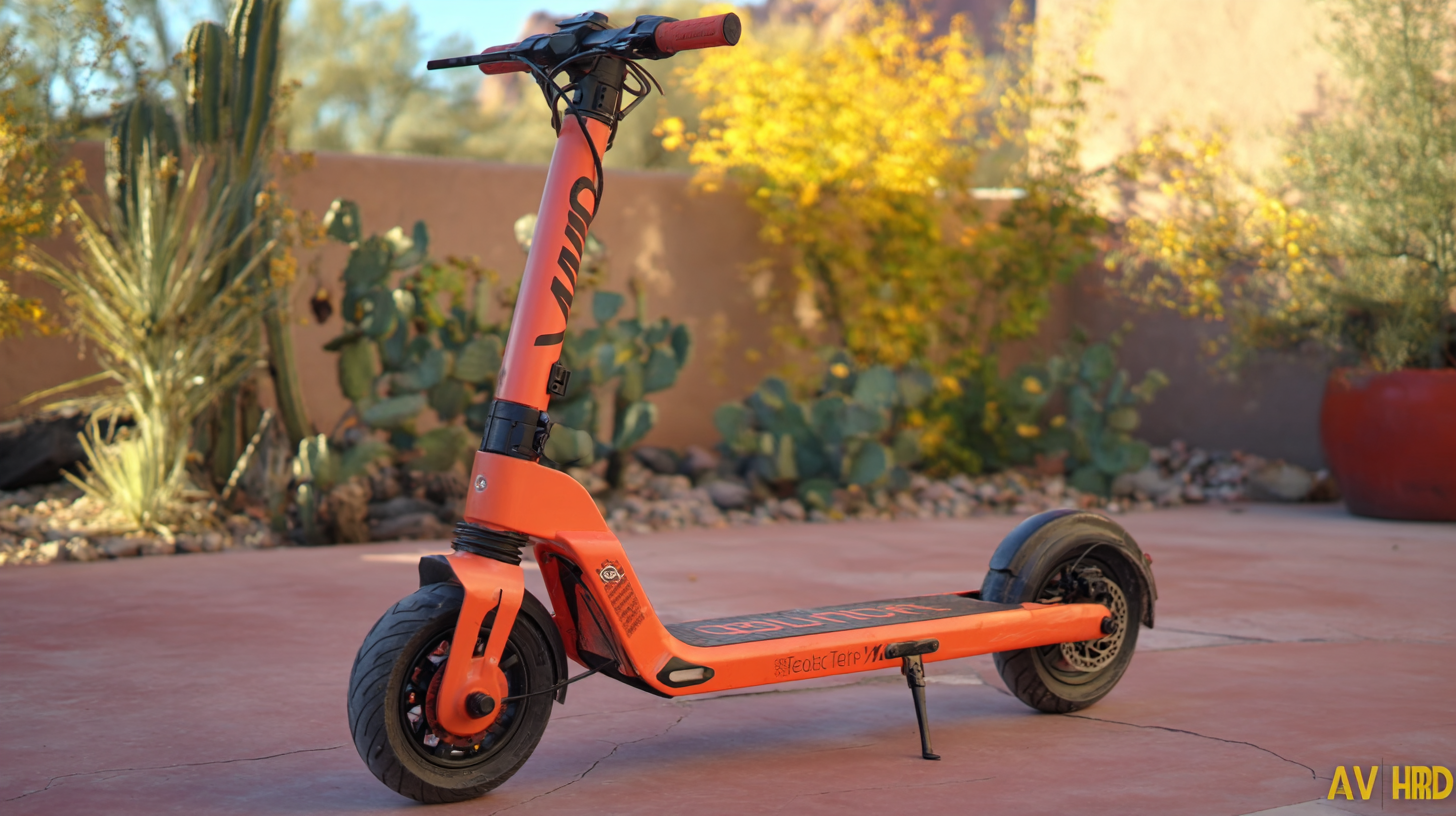In the rapidly evolving landscape of urban mobility, businesses are increasingly turning to innovative solutions to meet their transportation needs. One such solution gaining traction is the Scooter Electric, which offers a convenient and eco-friendly mode of transport. As we approach 2025, several industry trends are shaping the future of electric scooters, including advancements in battery technology, enhanced safety features, and improved regulatory frameworks. Choosing the best electric scooter for your business requires a careful assessment of these emerging technologies and their alignment with your specific operational needs. This blog will guide you through the essential factors to consider when selecting the ideal scooter electric, ensuring that your choice not only enhances productivity but also contributes to a sustainable future.

When exploring electric scooters for business use, it’s essential to understand the different types available on the market. The primary categories include commuter scooters, delivery scooters, and off-road models. Commuter scooters are designed for urban environments, equipped with features like efficient battery life and lightweight frames. Delivery scooters, on the other hand, often come with larger storage options and robust designs to handle various packages. Off-road scooters are built to withstand rough terrains, making them ideal for businesses that operate in diverse environments.
**Tip:** When deciding on the type of electric scooter, consider the specific needs of your business. For example, if your team frequently navigates busy city streets, a commuter scooter with fast charging capabilities might be the best choice. Alternatively, if deliveries involve carrying heavy loads, look for scooters with higher payload capacities and durable builds.
Another key aspect to assess is the speed and range of the scooter. Commuter scooters typically offer higher speeds for quick travel within city limits, while delivery models often prioritize range and power to cover longer distances without needing frequent recharges.
**Tip:** Calculate your average daily travel distance and requirements based on your business operations. This will help you select a scooter that not only fits your needs but also maximizes efficiency and productivity in your daily tasks.

When selecting the best electric scooter for your business needs, it is essential to evaluate key features that directly align with your operational requirements. One critical aspect to consider is battery life, which can significantly impact productivity. According to industry reports, scooters with longer battery durations offer around 40-70 kilometers on a single charge, making them suitable for businesses that involve extensive travel within urban areas. Additionally, features such as regenerative braking can extend the scooter's range while reducing maintenance costs.
Another vital consideration is load capacity. Different models can support various weight limits; therefore, understanding your typical cargo needs is imperative. For instance, scooters designed for heavier loads typically range from 100 kg to 300 kg, which makes them ideal for delivery services or transporting equipment. Alongside these specifications, safety features like anti-lock braking systems and built-in lights are increasingly recognized as essential components in ensuring rider safety and compliance with local regulations. Investing in a scooter that accommodates these needs will enhance operational efficiency and support sustainable business growth.
| Feature | Importance Level | Recommended Specifications | Notes |
|---|---|---|---|
| Weight Capacity | High | Up to 300 lbs | Ensure it can handle various cargo loads |
| Battery Life | High | 40-60 miles per charge | Consider daily range needs |
| Top Speed | Medium | 15-25 mph | Balance speed with safety |
| Portability | High | Foldable design | Important for easy storage and transport |
| Durability | High | Waterproof rating IP54 or higher | Withstand different weather conditions |
| Warranty | Medium | 1-3 years | Longer warranty's may indicate better quality |
When evaluating the cost-effectiveness of various electric scooter models for your business needs, it is crucial to consider not only the initial purchase price but also ongoing maintenance, battery life, and the total cost of ownership. According to a 2023 report by the Electric Vehicle Association, the average cost of a commercial electric scooter ranges from $300 to $2000, depending on the features and specifications. For businesses focusing on delivery services, models like the Xiaomi Mi Electric Scooter, priced around $499, offer an impressive balance of performance and affordability, making them particularly attractive for fleet operations.
Moreover, operational efficiency can significantly impact cost-effectiveness. In a study conducted by Market Research Future, electric scooters demonstrated a reduction in logistics costs by up to 30% compared to traditional gas-powered vehicles. Additionally, many models feature battery-swapping capabilities, allowing for increased uptime and reduced downtime. Factors such as these make it essential for businesses to perform an in-depth analysis of different scooters to identify the model that aligns best with their operational demands and budget constraints.
When choosing the best electric scooter for your business, one of the most critical factors to consider is the range and battery life. A recent study indicates that effective battery management, including optimal cell balancing techniques, can significantly enhance performance and lifespan, ultimately catering to the demands of daily operations. For businesses that require reliable transportation solutions, selecting a scooter with a multi-day battery life is paramount. Many scooters now feature batteries capable of delivering a range of up to 40 miles on a single charge, making them ideal for urban commuting and logistics.
Furthermore, sustainability plays a crucial role in selecting electric scooters. Research highlights the potential of second-life electric vehicle batteries to serve as a sustainable energy source. By integrating battery technologies commonly used in electric vehicles, scooters can minimize waste and promote a circular economy. This dual approach not only fuels daily business activities but also aligns with broader environmental objectives, ensuring that businesses contribute positively to sustainability while efficiently meeting their operational needs. Prioritizing scooter models that leverage these advancements can greatly enhance both performance and ecological impact.
This chart compares the range and battery life of five different electric scooter models. The range represents the distance each model can travel on a single charge, while battery life indicates how many hours the scooter can operate before needing a recharge. This information is critical for businesses considering electric scooters for daily operations.
When selecting an electric scooter for business purposes, maintenance and support options are critical factors that can significantly impact operational efficiency. According to a recent industry report by Research and Markets, the electric scooter market is projected to grow at a CAGR of 7.6% from 2023 to 2030, indicating a burgeoning demand that necessitates reliable support services. Businesses must consider maintenance packages that include regular servicing and quick access to spare parts to minimize downtime. Proactive maintenance not only extends the lifespan of scooters but also ensures safety, with the National Highway Traffic Safety Administration noting that proper upkeep can reduce accident rates by up to 30%.
Additionally, the level of manufacturer support can vary widely, making it essential for businesses to choose suppliers that offer robust warranty policies and responsive customer service. According to a survey by J.D. Power, businesses that engaged with manufacturers providing comprehensive support reported a 25% increase in overall satisfaction and operational effectiveness. Companies should evaluate their suppliers based on these criteria and seek out those who can provide technical assistance, timely repairs, and detailed operational training to their staff, creating a more streamlined and effective business model in the competitive landscape of urban mobility.

